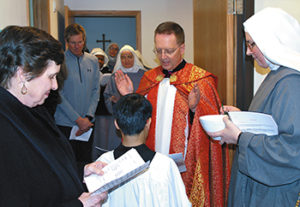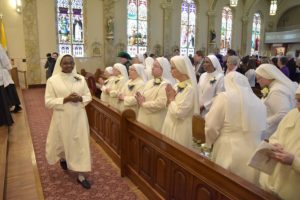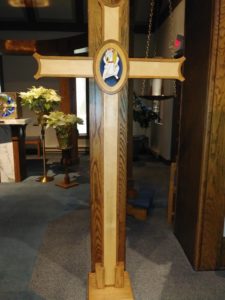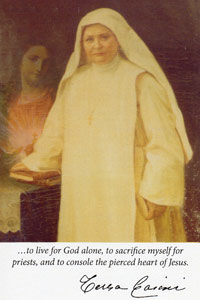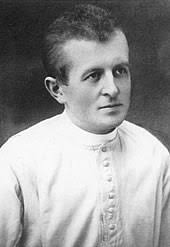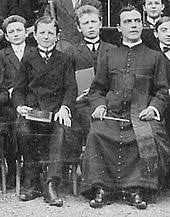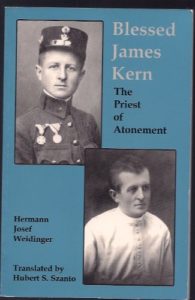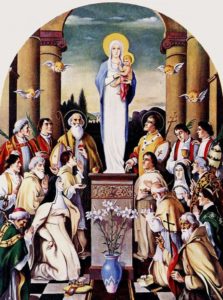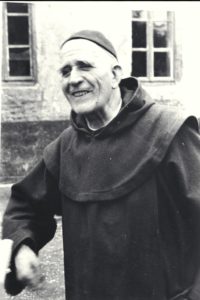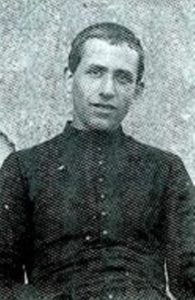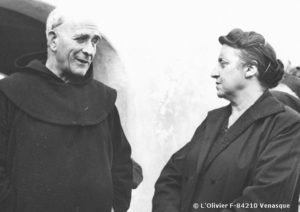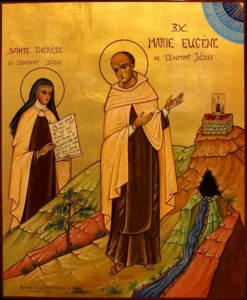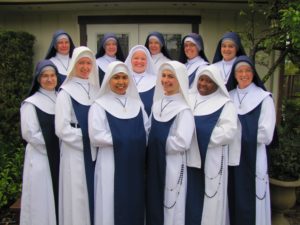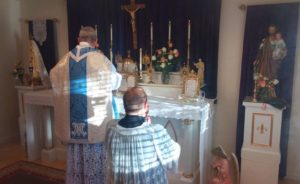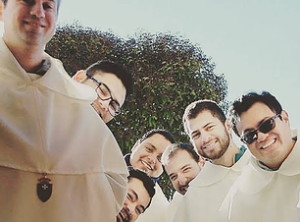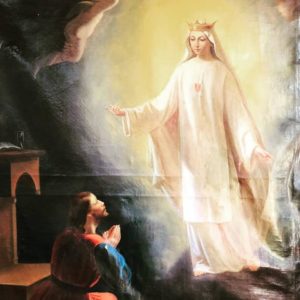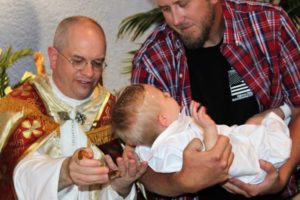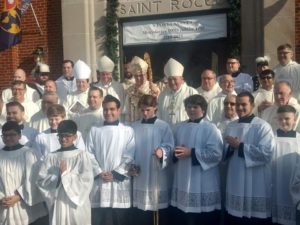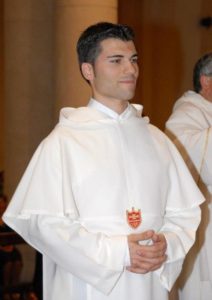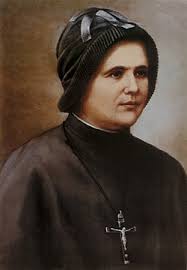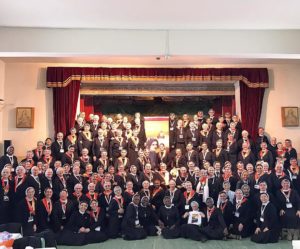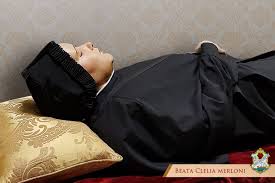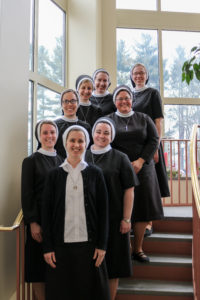This is the speech given by Sr. Constance Carolyn, l.s.p., on behalf of the Little Sisters of the Poor, who received the IRL’s Pro Fidelitate et Virtute Award. Given on April 27, 2019, at the University of St. Mary of the Lake.
 On behalf of all the Little Sisters of the Poor around the country, I’m very happy to thank you for this beautiful Pro Fidelitate et Virtute award. I understand that the award was designed to honor those “who manifest a strong love for the Church and a zealous commitment to the consecrated life.” I am sure that there are countless individuals and groups who would have been worthy awardees this year, no doubt worthier than ourselves, and yet here we are. Divine Providence chose us Little Sisters to receive the Pro Fidelitate et Virtute Award this year, during the sesquicentennial of our presence in America.
On behalf of all the Little Sisters of the Poor around the country, I’m very happy to thank you for this beautiful Pro Fidelitate et Virtute award. I understand that the award was designed to honor those “who manifest a strong love for the Church and a zealous commitment to the consecrated life.” I am sure that there are countless individuals and groups who would have been worthy awardees this year, no doubt worthier than ourselves, and yet here we are. Divine Providence chose us Little Sisters to receive the Pro Fidelitate et Virtute Award this year, during the sesquicentennial of our presence in America.
Providence is a word that easily rolls off the tongue of every Little Sister of the Poor, but what do we really mean when we talk about Divine Providence? I have to admit that for many years I thought of Providence more or less like a heavenly version of amazon.com, or an ATM machine — whenever we need something we just utter a prayer or, better yet, put a note under St. Joseph’s statue, and bingo, the need is met! The word “provide” is found in “Providence,” but is that all that Providence means, that God is the great heavenly provider? In studying our history the last couple of years, I’ve come to understand Divine Providence as so much more than that.
I’d like to begin with a story, a moment in our Congregation’s history that profoundly impacted my understanding of Providence. It’s not a story about our coming to America, although I will speak about that before I finish, but a story about our Congregation’s experiences during World War II. As early as 1940 the Germans occupied half of France. On December 6, 1940, 72 Little Sisters of British nationality were taken into exile and imprisoned by the Germans along with other women religious. American Little Sisters in France were imprisoned later, and they were all held in captivity until they were liberated by Allied forces in October 1944.
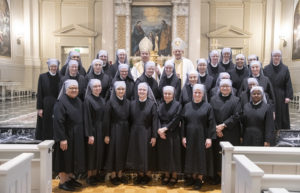 Also, during the War our motherhouse in Brittany was transformed into a vast but rather primitive home for the aged as Little Sisters and residents were evacuated from more dangerous areas of France. At the height of the War over 950 people were living at the motherhouse. These included Little Sisters, the elderly, benefactors and Little Sisters’ family members who had fled the dangers of the war.
Also, during the War our motherhouse in Brittany was transformed into a vast but rather primitive home for the aged as Little Sisters and residents were evacuated from more dangerous areas of France. At the height of the War over 950 people were living at the motherhouse. These included Little Sisters, the elderly, benefactors and Little Sisters’ family members who had fled the dangers of the war.
In addition, La Tour was used as a 500-bed military hospital. A total of 7,984 wounded soldiers were treated there during the war years. The German military also visited the motherhouse several times in view of taking it over for use as a hospital or training grounds. Fortunately for us, they were afraid of the old people and the communicable diseases they were presumed to carry, and found La Tour too primitive, so they never took it over.
Finally, a number of our houses were damaged or destroyed by bombings, including our novitiate in Marino, Italy, and our home for the elderly in Lisieux, France, both of which were destroyed during the Allied invasion. A total of 32 Little Sisters and 70 Residents were killed in these two bombings. Yet throughout all of these trials the Little Sisters never doubted God’s loving solicitude.
In 1944 Mother General wrote these remarkable words in a letter to the Congregation: “Someone recently remarked, with great emotion, ‘Your Congregation is truly privileged.’ Surely this is not obvious today, but at the time of our centennial (in 1939) the Princes of the Church were unanimous in proclaiming that our Congregation of Little Sisters of the Poor is a perpetual miracle, a glorification of Divine Providence. We realize this truth even more in light of our present trials: the bombings to which our homes in several regions have been exposed, the difficulties of the forced evacuations, the challenges involved in providing for everyone demonstrate the daily protection of our heavenly Father. We can repeat with Father LeLièvre, ‘Divine Providence never lets us down; in the measure that our religious family grows, Providence doubles its portion.’ What life-saving graces, what efficacious assistance! Despite the uncertainties of the morrow we feel ourselves now more than ever, the children of God’s delicate Providence!”
“The children of God’s delicate Providence!” Despite everything the Congregation had just gone through, Mother General had enough faith to call us the children of his delicate Providence! In fact at the beginning of the hostilities, she had made a vow to the Heart of Jesus to erect, at the completion of the War, a monument in thanksgiving for God’s protection — the divine protection she was sure he would grant the Congregation. This monument to Christ the King, bearing the words Glory, Thanksgiving and Love, was erected on the outside of the motherhouse chapel in 1947. Since then, generations of Little Sisters have passed by it multiple times every day.
What really struck me about this scenario is the way that our Sisters maintained their faith in God’s providential care even in extremely difficult circumstances. It is hard to imagine how such pressing, serious difficulties — not merely the solutions to these challenges, in which anyone might be able to see God’s intervention, but the challenges themselves — could be seen as demonstrations of God’s protection. Yet this is what our Mother General wrote.
I was also struck by Mother General’s vow at the beginning of the War to construct a monument to Christ the King once peace was restored. This was her way of thanking God ahead of time for the protection she was absolutely sure he would provide. Now that is confidence!
These same attitudes can be found in the stories of our first years in America. Father Ernest LeLièvre, whom Mother General referred to in her 1944 letter, was a diocesan priest who dedicated his life to our Congregation. Wealthy, well-educated and multilingual, he was largely responsible for our expansion beyond the boundaries of France. He arrived in America on June 10, 1868 and remained here for four straight years — even while the Franco-Prussian War raged back home in France — helping the Little Sisters to establish our first 13 homes in this country. He was also a spiritual father to both the Little Sisters and the elderly.
In all the challenges and obstacles he encountered Father LeLièvre would repeat, “I know in whom I have believed … I know that I serve a Master who values the will of a sincere heart beyond any talent” and “I know and am perfectly certain that of all the calculations I could make, the wisest is to abandon myself to Him.” At the end of his four years in America he wrote, “Here is my theology. When I return to Europe, I am going to do a thesis. The proposition that I will state and that I will prove by the whole history of the Little Sisters of the Poor is this: ‘We must believe in God, the Father Almighty.’”
Our first Little Sisters in America shared Father LeLièvre’s convictions about the Providence and universal fatherhood of God. The annals of each home are filled with stories of how God manifested his goodness by providing all kinds of necessities, always at just the right moment, through the generosity of good people in the community — all sorts of people from every walk of life.
Among our early benefactors were the founder of the first American men’s religious community, women religious from other European communities who had preceded the Little Sisters as missionaries in America, diocesan seminarians, bishops, archbishops and parish priests, school children and their parents, the richest woman in Boston and a couple of Irish maids who donated the shawls off their backs, farmers, butchers, fish mongers and a young heiress from Philadelphia who went on to establish a religious community to serve Native and African Americans.
Although the Little Sisters’ trust in Providence has most often been expressed in terms of material needs, it was not limited to the idea of God as provider. Like our foundress, St. Jeanne Jugan, our pioneering Little Sisters lived their faith with the simplicity of the “little ones,” the anawim. Their formation had taught them to look on events and persons with a living faith, which arouses hope and works through charity. The Sisters had a down-to-earth attitude toward ordinary events — with a very nitty-gritty apostolate among the sick and infirm they had to — but they also saw the action of God in those ordinary events.
During the very years when our first American foundations were being made, the Fathers of the first Vatican Council wrote these words: “God in His providence watches over and governs all the things that He made, reaching from end to end with might and disposing all things with gentleness.” In this definition, which is still widely used, we find the two aspects of Divine Providence — God both watches over and governs. To quote the great Jesuit Father Hardon, God “not only knows what is going on, he is directing what is going on…. God, who made the world out of nothing, not only keeps it in existence, but directs this world, God’s world, down to the smallest and most minute detail. God is active in every atom, in every proton, in every neutron. God is active in every thought we think, in every desire we have. All, all is part of his providence.”
“The Church tells us, God’s almighty providence, God’s almighty power governs the world with gentleness. God is mild. God is not loud or boisterous; he governs the world with gentleness. Our only danger is to not see his hand, to be deceived by his mildness to not realize that behind that mildness is omnipotence; in other words, it is divine power tempered by love. My favorite definition of gentleness,” Father Hardon wrote, is “power tempered by love.”
I’m sorry that it has taken me so long to get to the point this evening, but here is the point I wanted to make for all of us, members of the consecrated life and committed lay Catholics alike: As Father Hardon said in 1988, I think our society today often succumbs to the danger of not seeing God’s hand, of being deaf or inattentive to his voice because it is so gentle. At the same time, there is so much fear all around us. Shortly before the 2016 election I was at a conference in Washington and encountered a gentleman who was a fervent Catholic and a highly respected Washington insider. As we were leaving a panel discussion he said, “The way things are going in our country, this is the moment to believe in Providence; what else is there?”
Yes, this is the moment to believe in Providence! Now is the time to believe in a merciful and Provident God who is intimately involved in our daily lives. And so I think as believers we need to witness to those in our sphere of influence in a way that will inspire faith in God, our Father Almighty. We need to help others believe that we are ALL the children of God’s delicate Providence. We need to be able to say, each in our own way, “I know in whom I have believed … I know and am perfectly certain that of all the calculations I could make, the wisest is to abandon myself to Him.”
In our various spiritualities or religious families we might express this trust in God in different ways, but however we express it, we need to share this good news with our contemporaries! Our world is in such need of it!
Along with St. Jeanne Jugan, who said, “My Jesus, I have only you; come to my aid … If God is with us it will be accomplished,” I am thinking of St. Therese’s little way of confidence and love; and of the quote of St. Josephine Bakhita made famous by Pope Benedict: “I am definitively loved and whatever happens to me — I am awaited by this Love. And so my life is good.”
I recall the suscipe of Venerable Catherine McAuley: “My God, I am yours for all eternity. Teach me to cast my whole self into the arms of your Providence with the most lively, unlimited confidence in your compassionate, tender pity. Take from my heart all painful anxiety…”
On this eve of the Divine Mercy Sunday I am also thinking of St. Faustina, who taught us to trust in Jesus, and who prayed: “O God, how much I desire to be a small child. You are my Father, and You know how little and weak I am. So I beg You, keep me close by Your side all my life and especially at the hour of my death. Jesus, I know that Your goodness surpasses the goodness of a most tender mother.”
Finally, I am reminded of a passage from Pope Francis’ Gaudete et Exsultate: “We need to live humbly in his presence, cloaked in his glory; we need to walk in union with him, recognizing his constant love in our lives. We need to lose our fear before that presence which can only be for our good. God is the Father who gave us life and loves us greatly. Once we accept him, and stop trying to live our lives without him, the anguish of loneliness will disappear (cf. Ps 139:23-24). In this way we will know the pleasing and perfect will of the Lord (cf. Rom 12:1-2) and allow him to mold us like a potter (cf. Is 29:16). So often we say that God dwells in us, but it is better to say that we dwell in him, that he enables us to dwell in his light and love.”
As I conclude I would like to thank you once again on behalf of all the Little Sisters of the Poor for this beautiful Pro Fidelitate et Virtute award. I pledge to you that we will strive to pay it forward by witnessing more convincingly than ever that God is the Father who gave us life and loves us greatly. We will strive to express our gratitude by being faithful daughters of the Church and faithful daughters of St. Jeanne Jugan, icons of mercy as Cardinal George once called us.
Please join us in praying for a new flourishing of vocations to our Congregation so that we can continue our mission in America for another 150 years! Thank you!
Like this:
Like Loading...
